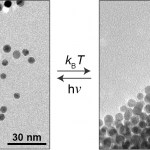autoimmune disease
One day in the future, we may be treating our ailments with microbiotic combinations designed specifically to correct imbalances in our personal microbiomes. We’ll bring our prescriptions on rewritable paper and pay using shimmery optical chips embedded in our cell phone cases or maybe our jewelry. Or we’ll be waiting in our doctor’s office for a simple test of our microbiogenome to see if a light-based nanoparticle delivery treatment is working, while watching iridescent optical displays that change as we move...
These future scenarios (and many more) are all imaginary, but…
When Dr. Jakub Abramson was a 14-year-old boy in the former Czechoslovakia, he asked his father what was the best place to do science. His father took the question seriously and, after some consideration, answered “the Weizmann Institute of
Dr. Jakub Abramson
Science.” Since that day, says Abramson, he knew he was bound for the Institute. “It’s just that the science I was interested in back then involved blowing things up,” he says.
Today, Abramson is more interested in exploding the common wisdom about autoimmune diseases. His lab at the Weizmann Institute has produced two new papers –…
Often, simply identifying the structure of a potential drug target protein and designing a molecule to block it are not enough. Just ask Prof. Irit Sagi, a chemist turned biology researcher, who recently developed a clever technique for directing the body to design its own protein-blocking molecules.
Sagi studies an enzyme called matrix metalloproteinase 9 (MMP-9). This protein, along with other members of the MMP family, cleaves straight through the support tissues in the body - collagen and the extracellular matrix that gives organs and tissues structure. This, of course is crucial for…
As I've laid out this week (part 1, part 2, part 3), the realization that a fairly simple, toxin-carrying bacterium could cause a "complex" and mysterious disease like hemolytic uremic syndrome came only with 30 years' of scientific investigation and many false starts and misleading results. Like many of these investigations, the true cause was found due to a combination of hard work, novel ways of thinking, and simple serendipity--being able to connect the dots in a framework where the dots didn't necessarily line up as expected, and removing extraneous dots as necessary. It's not an easy…

